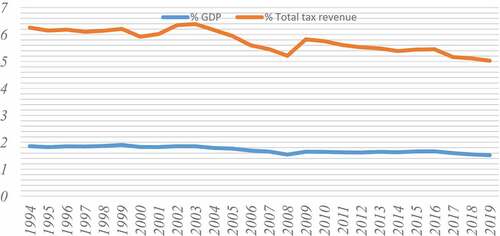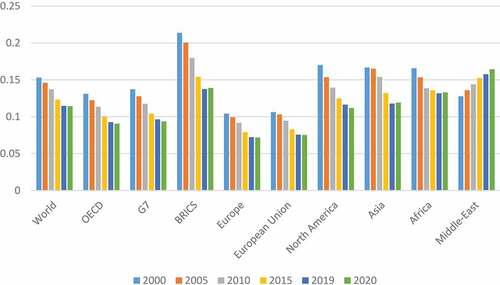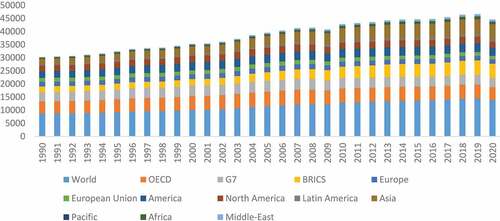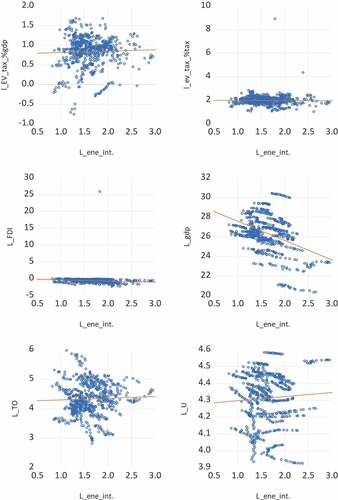Figures & data
Figure 1. Revenue from environmental taxes in the OECD 1994–2019, as a percentage of GDP and as a percentage of total tax revenue.

Figure 2. Composition of environmentally related tax revenue in OECD countries in 2019.

Figure 4. Energy intensity of GDP at constant purchasing power parities (koe/$15p) (from 2000–2020).

Table 1. An a prior expectation between energy consumption and determinants of environmental taxes. Dependent variable: energy consumption and energy intensity
Table 2. Definition and sources of variables
Table 3. Cross-sectional dependence test
Table 4. Results of unit root test
Table 5. Panel co-integration results
Table 6. Results of estimation
Table 7. Disaggregation of environmental tax effect (long-run coefficients)
Table 8. Estimation results (using Share of environmental tax to GDP as independent variable)
Table A1. Descriptive statistics
Table B1. Quantile regression estimates (dependent variable: energy consumption)
Table C1. Quantile regression estimates (dependent variable: energy intensity)
Table C2. Panel generalized methods of moments Dependent variable: Energy Intensity
Table C3. Panel generalized methods of moments. dependent variable: energy consumption



